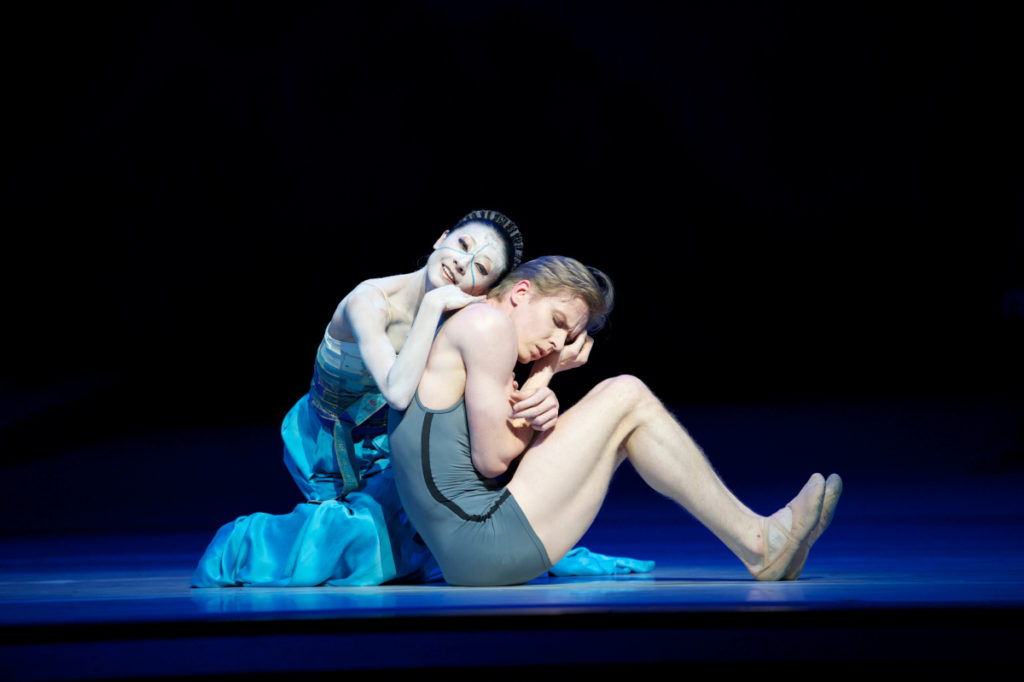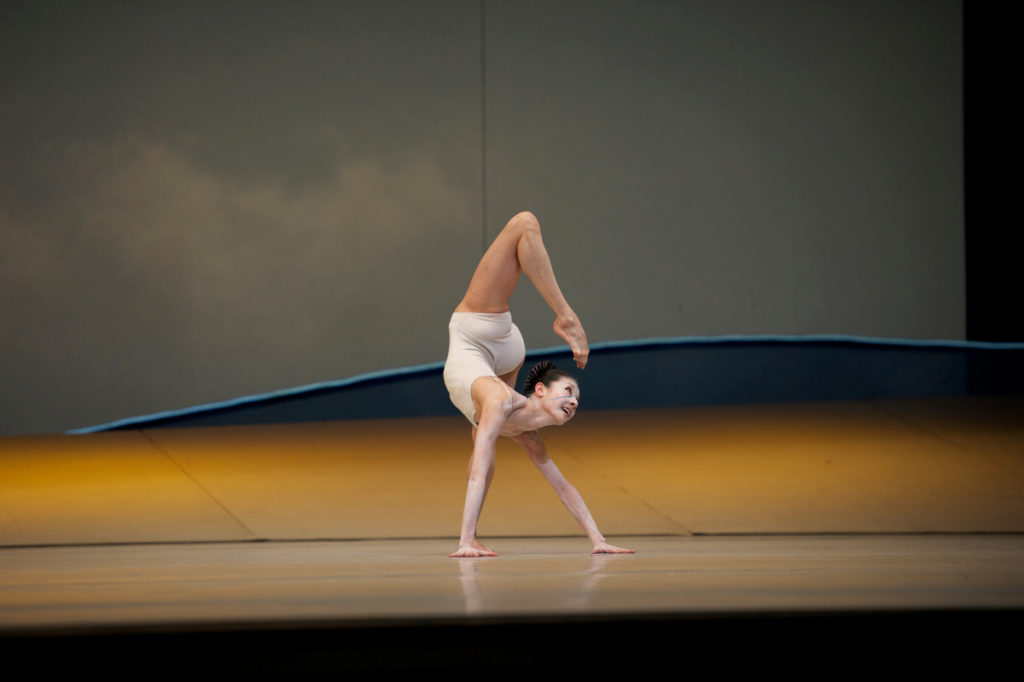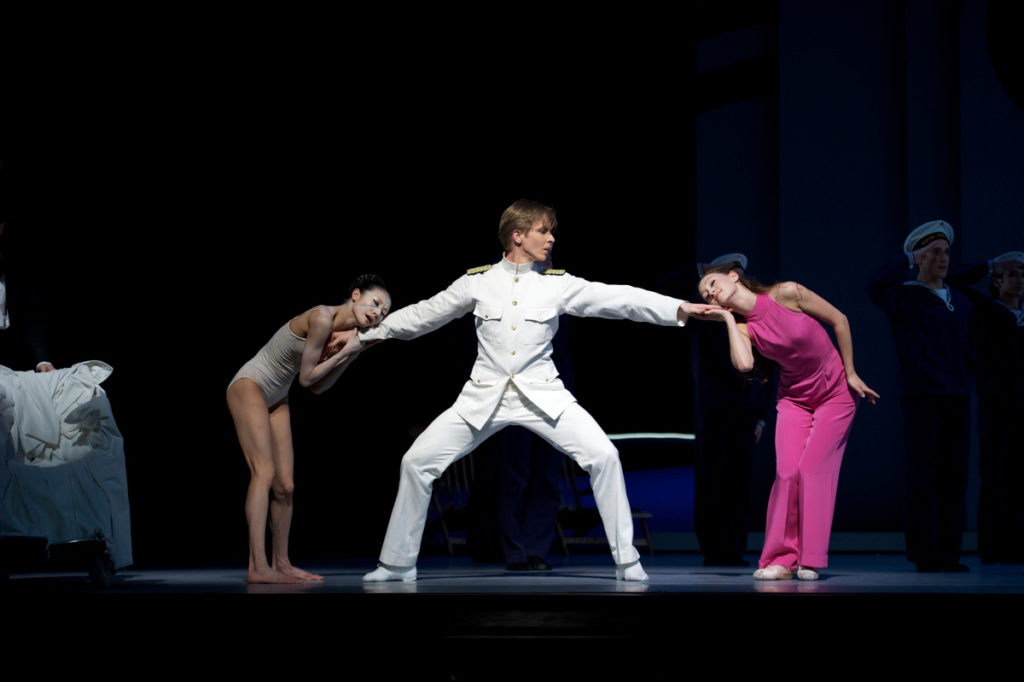The Story of John Neumeier’s The Little Mermaid
A Tale of Memories, Fantasies, and Longing
Prologue
During a sea voyage, a Poet remembers the wedding of his dear friend Edvard to Henriette. Mourning his separation from Edvard, a tear rolls slowly down the Poet’s cheek, falling into a sea of memories and fantasies.

Part 1
At the bottom of the sea, the Poet’s longing for Edvard takes the form of a little mermaid. This lovely sea creature watches a ship pass on the water’s surface, and dreams of the earth world. On board the passing ship, sailors are exercising. Their Captain, a Prince—strongly resembling Edvard—is absurdly playing golf. Accidently hitting a ball overboard, he dives into the sea to retrieve it. Although the Prince is unable to see the Mermaid, her presence embraces him. When the Sea Witch appears, a terrible storm erupts and the Prince is in danger of drowning; the Poet wills the little Mermaid to rescue him. Holding the Prince’s unconscious body, the Mermaid, whose frolicsome play has now turned to love, cannot resist kissing him.

Bells sound as a group of convent school girls arrive at the seashore. One of the girls, a Princess—looking very much like Henriette—discovers the Prince. She tentatively wakes him. Believing the Princess to be one who saved him, the Prince seems to fall in love with her.
Sad and despondent, the little Mermaid witnesses the developing affection between the Prince and Princess, and mirroring the Poet’s soul, her desire for the Prince turns to desperation.
Determined to become human, the little Mermaid searches for the Sea Witch. Love gives the little Mermaid courage to beg for a human body. A terrible ritual follows, and taking her beautiful tail as ransom, the Sea Witch violently transforms her. The little Mermaid now has legs.

Waking naked on the seashore, she finds her first steps unbearably painful. The Prince, passing by, takes pity on this strange creature and carries her on board his ship. It seems her dream has been realized.
As the ship is about to depart, the Prince discovers the Princess among the passengers. As the love between the Prince and Princess intensifies, the little Mermaid suffers the intense pain of human disappointment.

Part 2
The little Mermaid is determined to be a woman, but the closed rooms of the earth world stifle her attempts. In spite of her efforts, she is still awkward and clumsy in her human body. Visions of the sea cross through her dream. Deeply in love with the Prince, the little Mermaid’s desire to be loved in return is now clearly in vain; today he will marry the Princess. The little Mermaid is to be a bridesmaid.
During the celebrations, the Sea Witch appears as part of a strange entertainment. He gives the little Mermaid a lethal knife, promising that if she kills the Prince, her tail will be restored, and she will be able to return home in the deep sea. After all the guests have departed, the little Mermaid encounters the Prince. But it is clear to her that she could never harm him. During their farewell, the little Mermaid wonders whether the Prince feels, just for a moment, the depth of her passion. Did they nearly kiss? Abruptly he departs for his wedding night with the Princess.
Epilogue
The little Mermaid is left alone. Her pain reflects the Poet’s own painful situation. Each seems the shadow of the other—each abandoned by the object of their intense love. They are one—creator and creation. It is the Poet’s love for his Mermaid that gives her the soul that will make her immortal, just as she, “The Little Mermaid,” will immortalize him. Courageous, they search for a new world.
Header image: Yuan Yuan Tan in Neumeier's The Little Mermaid // © Erik Tomasson








